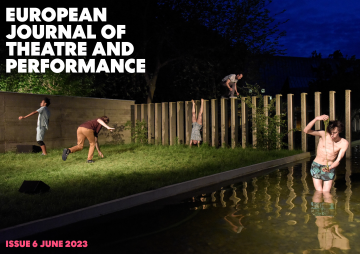From the ingenious sprinkler systems installed in nineteenth-century German theatre buildings up to the delicate tuning in and out during participatory performances, the Essays Section of EJTP issue 6 brings together some new elements to rethink fluidity in our field of study. The six essays collected under the title Fluidity Matters invest first and foremost in reinterpreting how a fluid matter constructs and deconstructs a network of energies, trying to catch it in words or in images. Fluidity is by its nature a matter which is difficult to grasp. But by reflecting on artistic work that expands the several streams in which fluidity flows and overflows, the scholars we selected for this volume create a kind of delta that gives a view on the many possibilities of what fluids can do on stage.
As is apparent from the various essays that make up this section, contemporary stages seem to be characterized by a becoming-fluid (Deleuze, 1969: 9) that goes beyond the flows of liquids and rather appears as the phenomenological expression of a more general abolition of boundaries: fluids are associated, in turn, to the trans or the aging body, but also to a prospective and futuristic body that refuses all hierarchies. The boundaries between inside and outside, between top and bottom, and more generally, between matter and form and matter and mind are in these cases intended to be abolished.
In the Archives Section we present the work of the Romanian actor Miluță Gheorghiu who became famous nationwide by playing a female character. This cross-dressing practice was very peculiar under communist regime, knowing that until 2001 any expression against the heterosexual norm was illegal in Romania.
In the Artist in Focus Section we shed light on the artistic career of Constanza Macras, EASTAP’s Associate Artist 2022, with an interview with the artist, an essay on her oeuvre and a portfolio showing the many aspects of her work.
The Book Reviews Section offers critical discussions of several recent significant publications in theatre and performance studies, both within English and non-English speaking academia.

